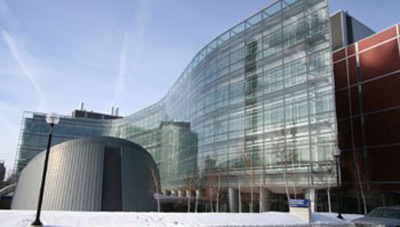Patients and carers meeting to enhance Ann Arbor conference

The Organising Committee at the University of Michigan and the NA Advocacy is delighted to see the addition of a Patients/Carers meeting alongside the scientific meeting at the Chorea-Acanthocytosis and Intracellular Transport Meeting in May in Ann Arbor. The purpose of this meeting at the Taubman Biomedical Science Research Building is to meet others affected by NA, including their family and carers, for support and information, and also to discuss the future of the Advocacy for Neuroacanthocytosis Patients. We are a small, web-based charity registered in the UK and are looking for volunteers who might be interested in taking over some of the organizational aspects of the group and extend the reach globally. We are pleased thirteen patients and 16 family members will be attending the first NA programme specifically organised for them. The Agenda for the weekend: Family meeting 12-14 May 2016
Biomedical Science Research Building, 109 Zina Pilcher Place, Ann Arbor
Friday 6pm: Dinner at the Ann Arbor Regent Hotel (2455 Carpenter Rd, Ann Arbor) with other patients, families and caregivers
Saturday: bus will collect you at 6:45 and deliver you to the Research Building
7:00am - 8:00am Continental Breakfast**
8:15am – 8:30am: Introduction* (Kahn Auditorium)
8:30am – 9:00am: ChAc 15 years after identification of the VPS13A gene: Past accomplishments and present challenges**, Adrian Danek, MD, Department of Neurology, Ludwigs-Maximilians-Institute, Munich, Germany
9:00am - 9:30am: Session with ChAc patient and family**, Alex and Ginger Irvine, London; Ruth Walker, MD, PhD, Department of Neurology, James J. Peters VAMC, Bronx & Mount Sinai School of Medicine, NY
9:30am – 10:00am: break - move to Room D
10:00am – 11:00am: Introductions of all patients/caregivers
11:00am – 12:00pm: History and Background of the Advocacy for Neuroacanthocytosis Patients, Ginger and Alex Irvine- Q&A
12:00pm - 1pm Lunch**
1:00pm – 1:45pm: Physical Therapy for NA, Jo Klein, Physical Therapist, Department of Physical Medicine and Rehabilitation. University of Michigan
1:45pm – 2:30pm: Speech and Swallowing Evaluation and Intervention for NA, Karen Kluin, MS, CCC, BC-ANCDS, Speech-Language Pathologist, Department of Speech-Language Pathology, and Clinical Assistant Professor, Department of Neurology, University of Michigan Health System
2:30pm – 3:15pm: break
3:15pm – 5:00pm: Usui Reiki Ryoho - a Japanese relaxation/healing practice for care in body and mind, Andrew Anders, Reiki Master Teacher
5:00pm – 7:00pm: Poster Session**
7:00pm – 9:00pm: Reception-Dinner**
Sunday: bus will collect you at 8:15 at the hotel and bring you to the breakfast and meeting
8:30am – 9:30am: Continental Breakfast
9:30am – 10:30am: Medical Q&A, Adrian Danek, MD and Ruth Walker, MD, PhD
10:30am – 12:00pm: Moving forward: Discussion of needs of the Advocacy for Neuroacanthocytosis Patients, Ginger Irvine
Patient registry, Adrian Danek, MD
12:00pm – 1:00pm: Lunch
Transportation provided from meeting site to airport.
**Joint sessions with scientific program in Kahn Auditorium
This meeting is being supported financially by the University of Michigan School of Medicine and the Rackham School of Graduate Studies, the Departments of Neurology and Biological Chemistry, philanthropy, a grant from the Advocacy for Neuroacanthocytosis and Neurocrine.
|